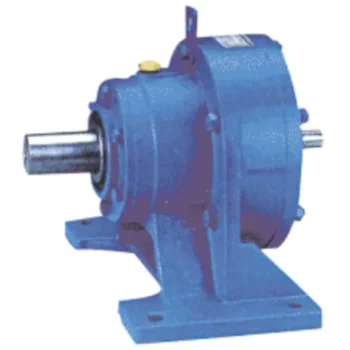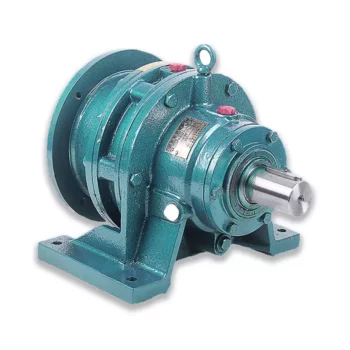Product Description
Technical data:
1. Ratio range: 3.15-9N. M
4. Output speed: 0.425-445 r/min
5. Structure mode: Possibility of flange, foot, or shaft mounting solutions
Characteristic:
1. Wide and comprehensive range of N series for industrial applications
2. Low speed shaft design: Cylindrical with key, splined, hollow with shrink disc or splined hollow shaft
3. Rigid and precise nodular cast iron casing
4. Low noise running, high manufacturing quality standard
5. High and reliable performance, load capacity and low speed shaft bearing
| Ratio | 3.15:1 to 9000:1 |
| Reduction Stages | up to 6 reduction stages in 1 gearbox |
| Nominal Output Torque | up to 800,000N.m |
/* March 10, 2571 17:59:20 */!function(){function s(e,r){var a,o={};try{e&&e.split(“,”).forEach(function(e,t){e&&(a=e.match(/(.*?):(.*)$/))&&1
| Application: | Industry |
|---|---|
| Function: | Distribution Power, Speed Reduction |
| Layout: | Cycloidal |
| Hardness: | Hardened Tooth Surface |
| Installation: | Horizontal Type |
| Step: | Single-Step |
| Customization: |
Available
| Customized Request |
|---|
Calculation of Reduction Ratio in a Cycloidal Gearbox
The reduction ratio in a cycloidal gearbox can be calculated using the following formula:
Reduction Ratio = (Number of Input Pins + Number of Output Pins) / Number of Output Pins
In a cycloidal gearbox, the input pins engage with the lobes of the cam disc, while the output pins are engaged with the cycloidal pins of the output rotor. The reduction ratio determines the relationship between the number of input and output pins engaged at any given time.
For example, if a cycloidal gearbox has 7 input pins and 14 output pins engaged, the reduction ratio would be:
Reduction Ratio = (7 + 14) / 14 = 1.5
This means that for every 1 revolution of the input pins, the output rotor will complete 1.5 revolutions. The reduction ratio is a key parameter that influences the output speed and torque of the cycloidal gearbox.
Patents Associated with Cycloidal Gearbox Designs
Throughout the history of cycloidal gearbox development, several patents have been filed for various designs and applications. Some notable patents include:
- Harmonic Drive: Ralph B. Heath’s patent for the “Harmonic Drive” (US Patent 2,906,143), filed in 1957, is one of the most famous patents related to cycloidal gear systems. This patent introduced the concept of a high-precision reduction gear mechanism using flexible components.
- Cycloidal Drive Mechanism: A patent by James Watt for a “Cycloidal Drive Mechanism” (GB Patent 1812), dating back to the 18th century, is often cited as one of the early references to cycloidal motion and gears.
- Planetary Roller Transmission: US Patent 3,671,927 by C.F. Kafesjian and H. Blumenstock introduced a “Planetary Roller Transmission” in 1972, describing a cycloidal drive mechanism with planetary motion.
- Cycloidal Speed Reducer: A patent for a “Cycloidal Speed Reducer” (US Patent 5,588,583) was granted to Richard J. Pieprzak in 1996, focusing on an improved design of cycloidal gears for various applications.
These patents represent a small sample of the numerous innovations and designs related to cycloidal gear systems that have been patented over the years. Patents play a significant role in protecting and promoting innovation in the field of gearbox technology.
Disadvantages of Using a Cycloidal Gearbox
While cycloidal gearboxes offer various advantages, they also come with some disadvantages that should be considered:
- Lower Efficiency at High Speeds: Cycloidal gearboxes can experience a decrease in efficiency at high speeds due to increased friction and rolling resistance.
- Complex Design: The internal arrangement of pins, lobes, and bearings can result in a relatively complex design, which may lead to higher manufacturing costs and maintenance challenges.
- Limited Gear Ratio Range: Cycloidal gearboxes might have limitations in terms of achieving very high gear ratios, which can impact their suitability for certain applications.
- Cost: The specialized design and precision manufacturing involved in producing cycloidal gearboxes can lead to higher upfront costs compared to other gearbox types.
- Noise Generation: While generally quieter than some other types of gearboxes, cycloidal gearboxes can still produce noise during operation, which might need to be addressed in noise-sensitive applications.
- Availability: Cycloidal gearboxes might not be as widely available as other gearbox types, potentially leading to longer lead times for procurement and replacement parts.
- Limited Backlash Adjustability: While cycloidal gearboxes have minimal backlash, adjusting or fine-tuning the backlash might be more challenging compared to other gearbox types.
Despite these disadvantages, cycloidal gearboxes remain a valuable choice for specific applications where their unique advantages outweigh the drawbacks.
editor by CX 2024-01-08




